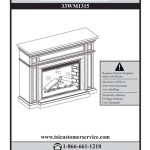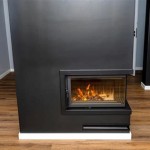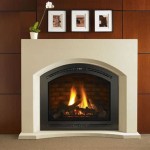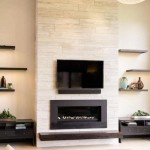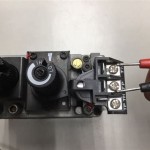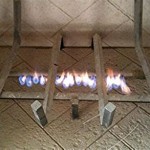Small Fireplace Blower Fans: Enhancing Heating Efficiency and Comfort
Small fireplace blower fans, also often referred to as fireplace fans or fireplace blowers, are auxiliary devices designed to improve the heat distribution of a fireplace. They work by drawing cooler air from the room, passing it through a heat exchanger within or around the fireplace, and then expelling the warmed air back into the room. This process enhances convective heat transfer, distributing heat more evenly and efficiently than relying solely on radiant heat from the fire itself.
Traditional fireplaces, while aesthetically pleasing, are often inefficient heating sources. A significant portion of the heat generated by the fire escapes up the chimney, resulting in limited warming of the surrounding area and increased energy consumption. Small fireplace blower fans help to mitigate this issue by capturing and redirecting otherwise lost heat, making them a valuable addition for homeowners seeking to maximize the heating potential of their fireplaces.
Understanding the Mechanics of Heat Transfer
To appreciate the benefits of a fireplace blower fan, it's essential to understand the principles of heat transfer. Heat primarily moves through three mechanisms: conduction, convection, and radiation. Conduction involves the transfer of heat through direct contact between materials. Convection relies on the movement of fluids (liquids or gases) to carry heat from one place to another. Radiation transfers heat through electromagnetic waves, which do not require a medium to travel.
Fireplaces primarily rely on radiant heat, emanating directly from the flames and heated surfaces. While radiant heat is effective in warming objects and individuals directly in front of the fireplace, its effectiveness diminishes rapidly with distance. Convection, on the other hand, is less pronounced naturally in a traditional fireplace setup. The hot air tends to rise directly up and out of the chimney. A fireplace blower fan capitalizes on convection by forcing air to circulate around the firebox, absorbing heat and then propelling it into the room, creating a more uniform temperature distribution.
The efficiency of a fireplace blower fan is determined by factors such as the fan's airflow rate (measured in cubic feet per minute or CFM), the design of the heat exchanger, and the overall thermal conductivity of the fireplace materials. A well-designed system will extract a significant amount of heat from the fireplace structure and efficiently distribute it throughout the space.
Types and Considerations for Small Fireplace Blower Fans
Fireplace blower fans come in various designs to suit different fireplace types and homeowner preferences. Some common types include:
- Hearth-mounted blowers: These fans sit on the hearth in front of the fireplace and draw air from the floor, circulating it through the fireplace opening. They are generally easy to install and adaptable to many fireplace designs.
- Insert blowers: Specifically designed for fireplace inserts, these blowers are integrated into the insert unit and are often more powerful and efficient than hearth-mounted models.
- Through-the-wall blowers: Installed in the wall behind the fireplace, these blowers draw air from an adjacent room or cavity and direct it into the fireplace. This option may require more extensive installation.
- Magnetic fireplace fans: Operate without electricity, using the heat of the stove to power a thermoelectric generator that drives the fan. This makes them energy efficient and silent, though their airflow tends to be lower than electric models.
When choosing a fireplace blower fan, several factors should be taken into consideration: the size and type of fireplace, the desired heating area, the noise level of the fan, and the ease of installation. Noise level is an important consideration, as some blower fans can be quite loud, potentially disrupting the ambiance of the room. A quieter model, even if slightly less powerful, might be preferable for many homeowners.
Installation can range from simple plug-and-play for hearth-mounted models to more complex wiring and mounting for insert and through-the-wall blowers. It is crucial to follow the manufacturer's instructions carefully and, if necessary, consult with a qualified technician for installation to ensure safe and proper operation.
Benefits of Utilizing Small Fireplace Blower Fans
The use of small fireplace blower fans offers several distinct advantages, improving both the heating effectiveness and overall comfort of a fireplace.
One primary benefit is enhanced heat distribution. By actively circulating warm air throughout the room, blower fans help to eliminate cold spots and create a more consistent temperature. This is particularly beneficial in larger rooms or homes with poor insulation, where relying solely on radiant heat may result in uneven heating.
Another advantage is improved energy efficiency. By capturing and redistributing heat that would otherwise be lost up the chimney, blower fans reduce the overall energy consumption needed to heat a space. This can translate into lower heating bills and a reduced environmental impact.
Finally, increased comfort is a noticeable outcome of using a fireplace blower fan. The accelerated and even distribution of heat creates a more cozy and comfortable living environment, allowing individuals to enjoy the warmth and ambiance of their fireplace without experiencing temperature fluctuations or drafts.
Regular maintenance, such as cleaning the fan blades and vents, is important to ensure optimal performance and longevity of the blower fan. Dust and debris can accumulate over time, reducing airflow and potentially causing the motor to overheat. Following the manufacturer's recommendations for maintenance will help to keep the blower fan operating efficiently and safely for years to come.

Fireplace Fan Blower S Com

Small Wood Stove Fan 4 Blade Fireplace For Burning Heat Powered Accessories Silent Operation Circulating Warm Air Non Electric Com

Fireplace Blower Fans What You Need For Heat Full Service Chimney

Best China Manufacture Quality Quiet Air Conditioning Fan Montigo Fireplace Centrifugal Blower With Heater Cross Flow Tangential Made In Com

Fireplace Fan Blower S Com

Noisy Gas Fireplace Blower Here S How To Replace It Diy

Fireplace Blowers Explained How Fans Work Regency

3 Blades Air Blower Heat Powered Wood Stove Fan Small Motor Burner Durable Fireplace Ca

Fireplace Fan Wood Stove Adjustable 360 Rotation Black Temu Austria

10 Best Wood Stove Fans 2024 Forestry Reviews

